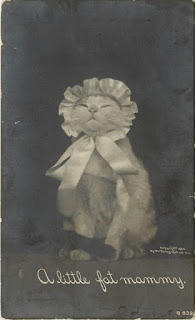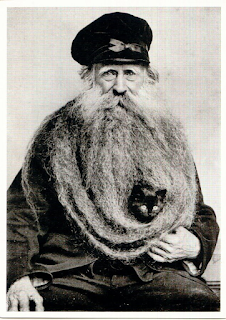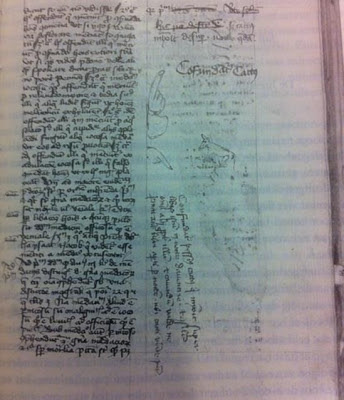For years, I've been wondering about the identity of the man in this picture. Though I had seen at least one more photo of him with a cat, this one in particular has been a staple of internet memes. It's no wonder: somehow, if the length of this fellow's beard doesn't already make an impression, it's the cat nicely wrapped within it that steals the show. Well, I finally got around to doing a bit of searching on the net.
Turns out the man is a Frenchman named Louis Coulon. One can easily find more pictures of this remarkable man by simply searching for his name in Google Images.
Born February 26, 1826 in Vandenesse (Niève), he was (as best I can translate) a "cast iron moulder" at the Forey factory in Montluçon. Apparently, he was already shaving by age 12 but could not maintain the sharpness of his razor blade from its frequent use. In fact, his beard was growing so fast that by age 14, Coulon already had a 50 centimeter (19.6 inch) beard. From then on, it was just a matter of letting it grow to monstrous length.
Even if Coulon attained a somewhat famous status, he remained humble, even refusing a lord William's offer of 10 000 franc to travel. He was featured on many postcards, one in particular stating that his beard was 3 meters 30 centimeters (129.9 inches) long as of May 10, 1904. Surprisingly, this beard is
not considered the world record: that title belongs to
Sarwan Singh of Canada, having a 2.37 m (7 ft 9 in) beard. To Mr. Singh's defense however, there were no Guiness World Record judges prior to 1954... Let us hope, however, that Coulon's beard will one day be vindicated!
But the fact remains, as amazing as Coulon's hirsute look is, it just wouldn't be complete without his fuzzy little companion!
Sources and further reading:
- "Barbe", Wikipedia.
- LAMAR, Cyriaque. "Using your 11-foot-beard as a nest for cats is history's great unsung fashion trend", io9, October 12, 2012.
- LÉQUY, Monique and Gérard LÉQUY. Qui est Bergeret ?
- "Une Barbe extraordinaire", La Nature: revue des sciences et de leurs applications aux arts et à l'industrie, Vol. 17, 1889, p. 85


















